I stepped onto Calle Ocho, Miami’s Southwest Eighth Street, with the half‑formed idea that I was visiting one more tourist attraction. The heat of late morning wrapped around me like a blanket and a rooster staring me down from the sidewalk seemed to be daring me to keep going. In Cuban culture roosters represent many things like good luck and macho pride to sacred offerings in Santería.
Here in Little Havana, six‑foot‑tall fiberglass roosters painted in tropical colors stand at nearly every intersection. These public sculptures were installed in 2002 as part of a national animal‑sculpture craze; Miami‑Dade’s empowerment trust commissioned them using a model by local artist Tony Lopez, whose pet rooster, Pepe, inspired his design.
Jump to: Cigars & Music • Domino Park • Murals & Landmarks • Cuban Memorial Boulevard • Viernes Culturales • Beyond the Tourist Strip • FAQ
TL;DR – Walking Through Little Havana
- Six-foot painted roosters line Calle Ocho, blending street art with local identity.
- The air smells of cigars and strong Cuban espresso from open café windows.
- Elders gather at Domino Park, preserving a decades-old ritual of play and community.
- Murals honor icons like Celia Cruz and José Martí, while the Tower Theater glows with history.
- Viernes Culturales (Cultural Fridays) turns the street into a festival of music and dance.
- Little Havana shows Miami’s living culture; heritage carried in art, sound, and spirit.
More on Miami:
The Smell of Cigars and the Sound of Music
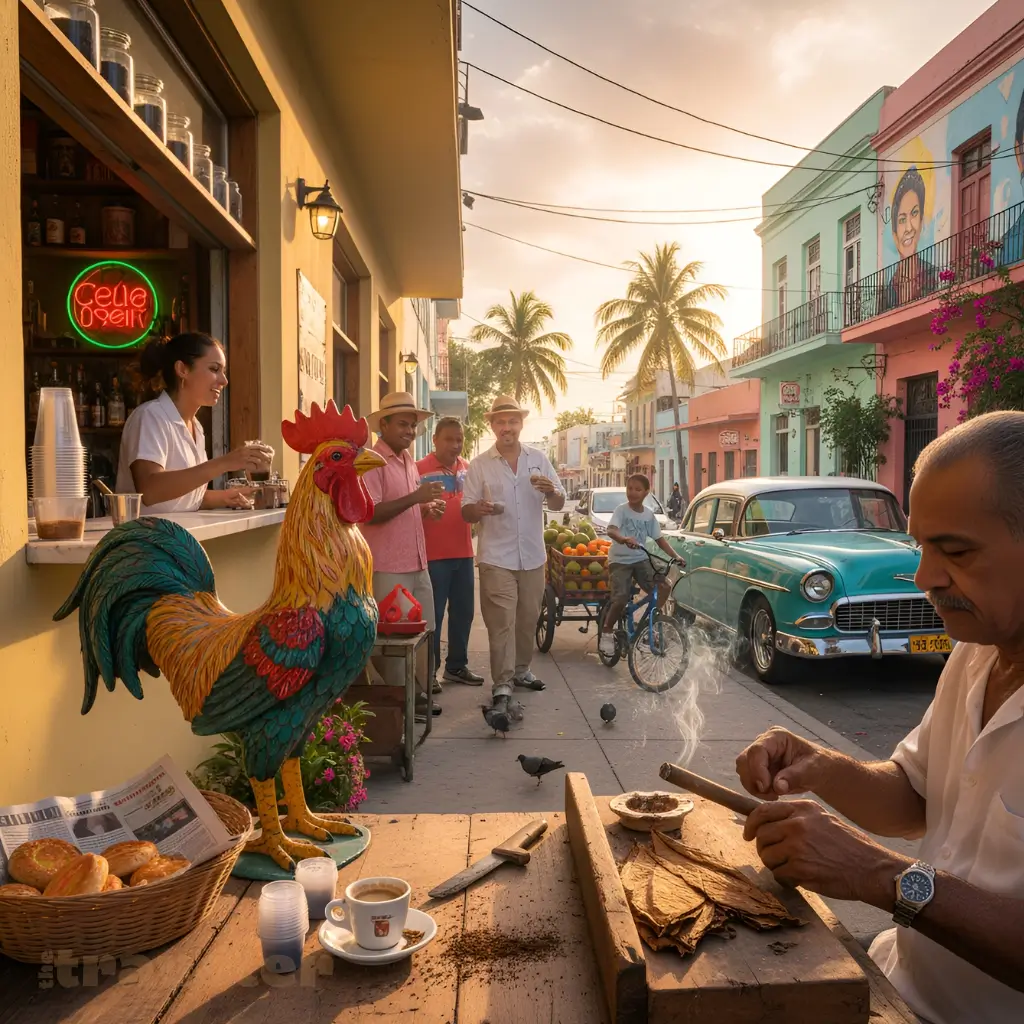
The first thing that hit me was smell. Walk up Calle Ocho in the afternoon and the air is thick with tobacco and espresso. As the sun begins to set, the smell of freshly lit cigars wafts along the street and diners smoke while eating al fresco. Ventanitas – little takeout windows cut into the sides of cafés – serve espresso strong enough to make your heart skip.
Locals order a colada and share it with friends from tiny plastic cups, a ritual of generosity that invites conversation. The taste of sweet, burnt sugar clings to your tongue and mixes with the earthy aroma of cigars, creating a scent that is uniquely Little Havana.
It isn’t just about taste and smell. On many corners you can peer through a glass window and watch nimble‑fingered artisans roll cigars by hand, each tobacco leaf smoothed and wrapped with pride. Colorful roosters painted with guayaberas and flowers stand guard outside fruit markets where vendors chop coconuts for juice. According to locals, these roosters were deliberately placed along Calle Ocho to brand the neighborhood after the launch of the Viernes Culturales arts festival and soon businesses bought their own because the community adored them.
The sounds of Spanish and the cadence of salsa spill from bars and record shops, blending with the beat of a timbal drum and giving the neighborhood a rhythm all its own.
A Gathering Place for Elders and Memories
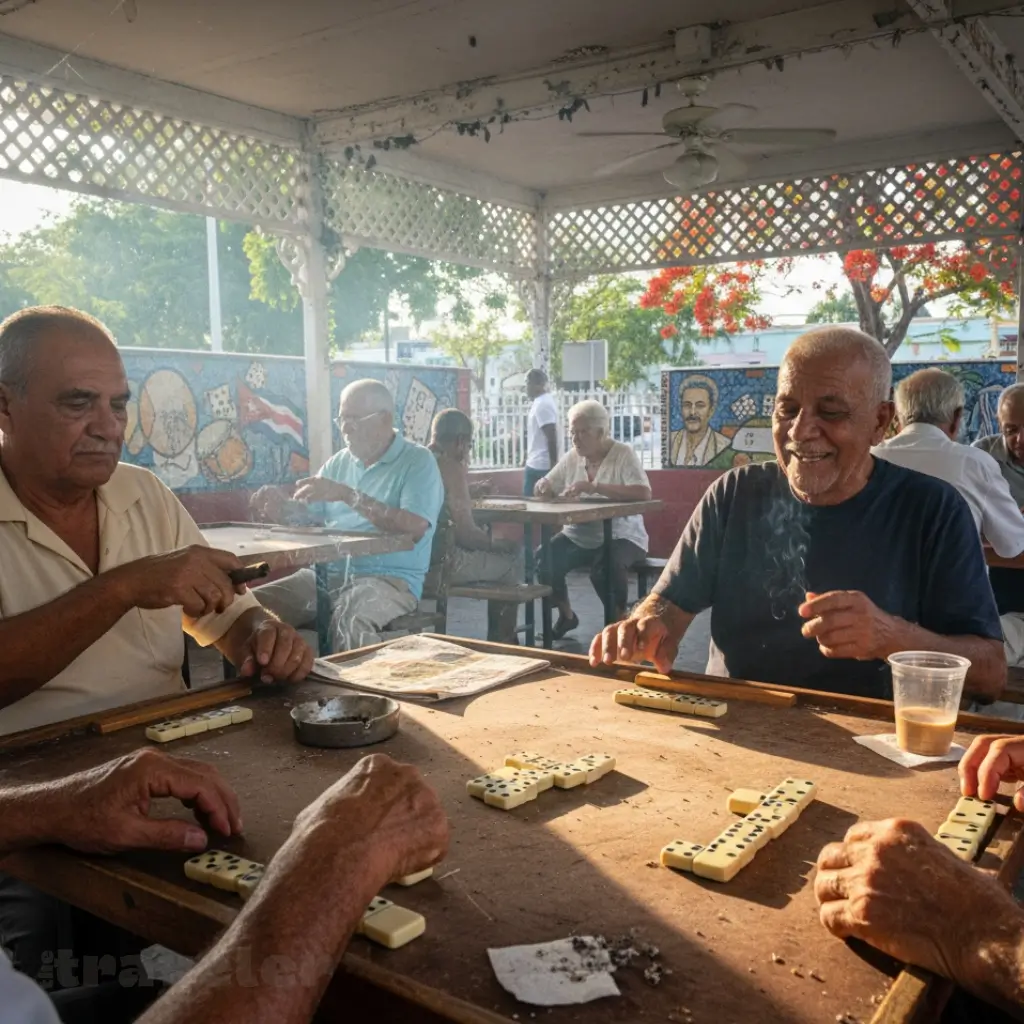
Across from the Little Havana visitor center stands Maximo Gómez Park, though locals simply call it Domino Park. On a rainy afternoon, I found shelter under the park’s roof and listened to the rapid clack of domino tiles. Hands slapped the tables and animated voices swapped stories and argued politics in Spanish. The city built this park in 1976 as a place where Cuban exiles could continue the tradition of playing dominoes, and it still maintains membership rules – players must be over 55 and residents – to preserve that sense of belonging.
Retirees gather here daily, smoke cigars and sip cafecito, their breath perfumed with tobacco and coffee. Although you need a membership to play, visitors like me can sit on benches and watch; occasionally a player will beckon you to join the game.
The park itself is small but packed with history. Mosaic tile murals on the walls depict Cuban symbols such as dominos, tropical fruit, conga drums and cigars. Painted portraits honor Cuban legends like poet José Martí and salsa queen Celia Cruz. It’s easy to see why Domino Park has become a powerful symbol of unity for Miami’s Latino communities. Standing there, I felt like a welcomed outsider invited to witness a ritual that has endured decades of exile and change.
Murals, Music and Mementos on Calle Ocho
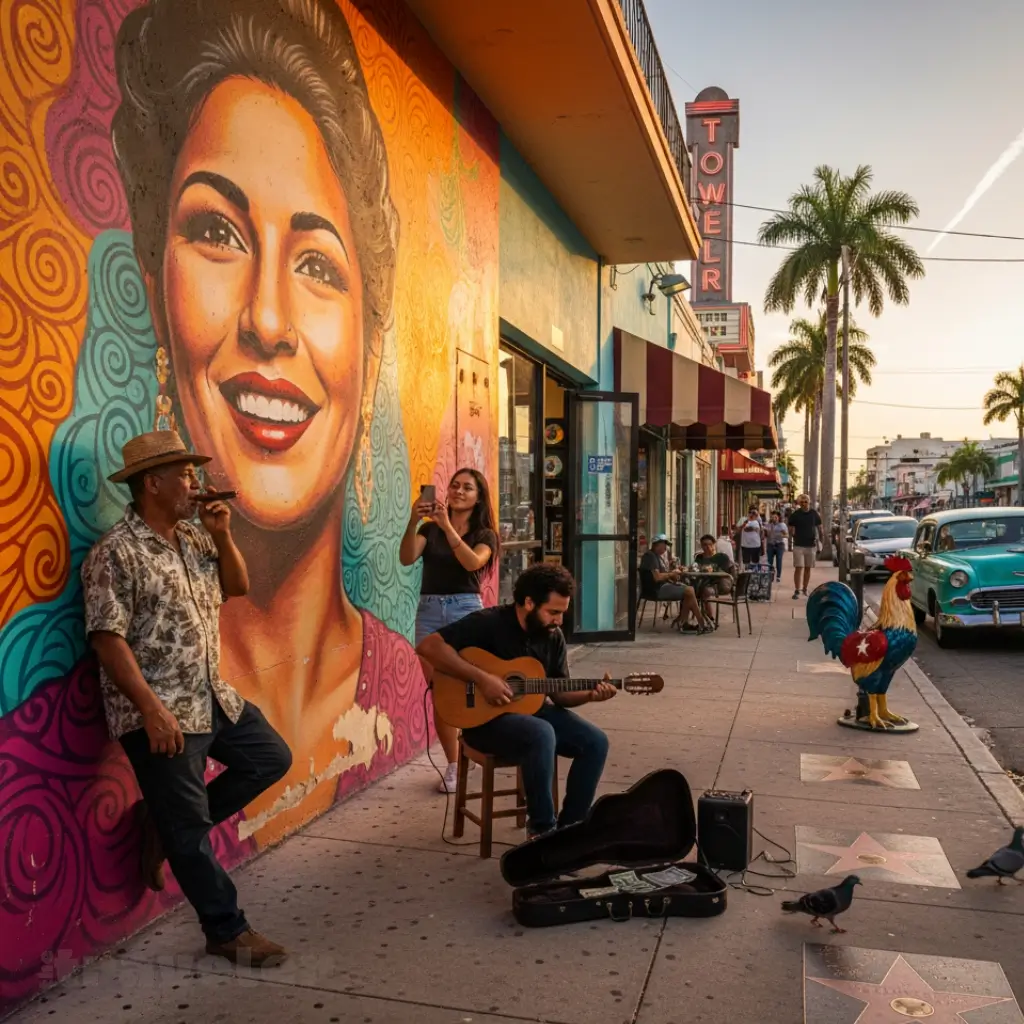
Little Havana’s streets double as an open‑air gallery. A fifty‑foot “Little Havana Wall” not far from Domino Park displays photographs and paintings celebrating Cuban history and contemporary life. Nearby, a brightly colored mural honors Celia Cruz, “La Reina de la Salsa.” Unveiled during a community event with live music and dancers, the mural’s vibrant textures make her larger‑than‑life smile impossible to miss.
The artwork sits beside Celia Cruz’s star on the Calle Ocho Walk of Fame, a sidewalk of star‑shaped plaques honoring Latin artists like Gloria Estefan and Desi Arnaz. When I traced my fingers over their names, I realized how deeply entertainment and culture are intertwined here.
Around the corner, the historic Tower Theater glows with neon lights. Built in 1926, this Art Deco landmark once introduced newly arrived Cuban refugees to American culture by showing English‑language films with Spanish subtitles. It later screened Spanish films and closed in the 1980s, but today the theater thrives again, showing foreign films and serving as a social hub near Domino Park. Its marquee felt like a time machine to a glamourous past, yet local teenagers and elders mingle easily in its lobby, proof of how living traditions adapt and continue.
Cuban Memorial Boulevard
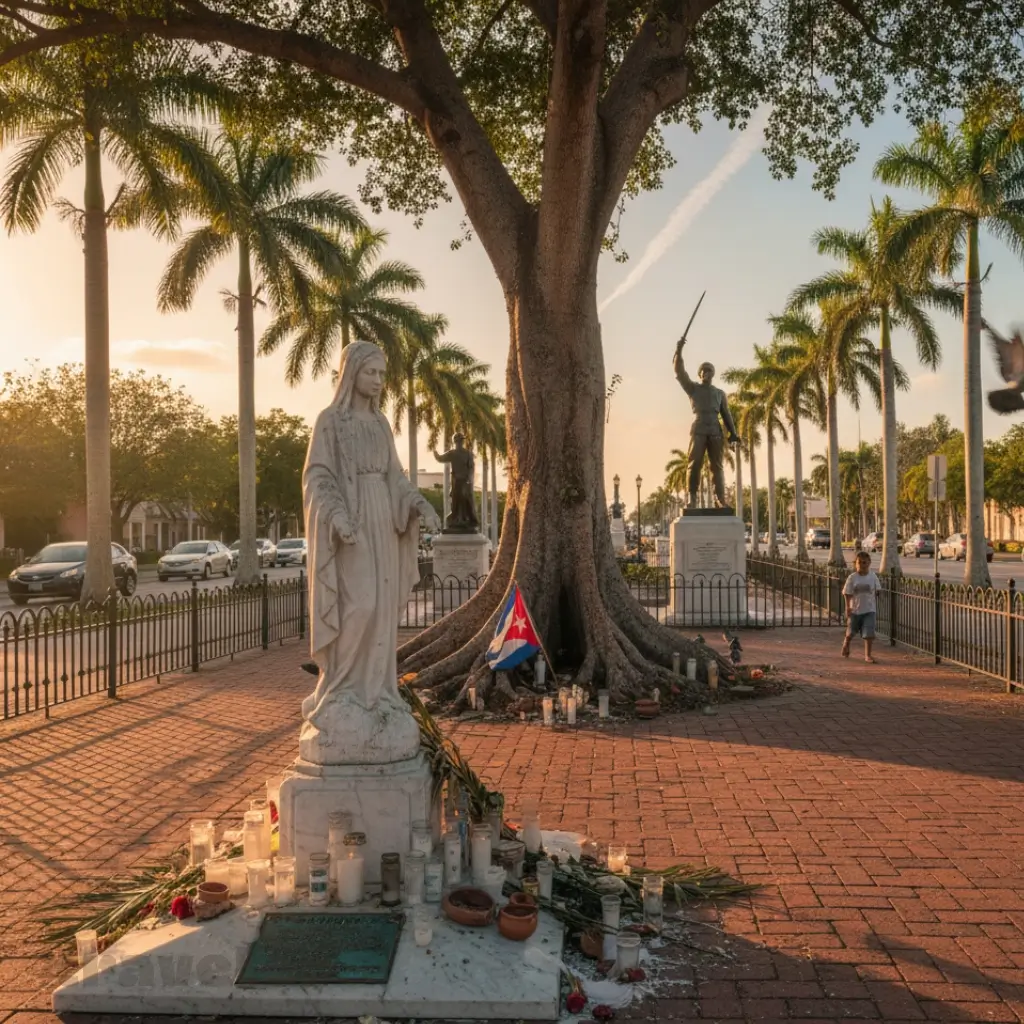
Leaving the bustle of Calle Ocho, I wandered to Cuban Memorial Boulevard. This tree‑lined median is home to monuments honoring Cuban freedom fighters. Plaques and statues commemorate the Bay of Pigs invasion and heroes like Antonio Maceo. An eternal torch burns for Brigade 2506, and a bronze map of Cuba faces a statue of the Virgin Mary.
The boulevard also features a Ceiba tree ringed with candles left by devotees; in Afro‑Cuban religions roosters and other offerings are placed at its roots to honor the orishas. Seeing wax drippings and feathers at the tree’s base reminded me that, for many residents, spirituality and ancestry are woven into the fabric of daily life.
Viernes Culturales
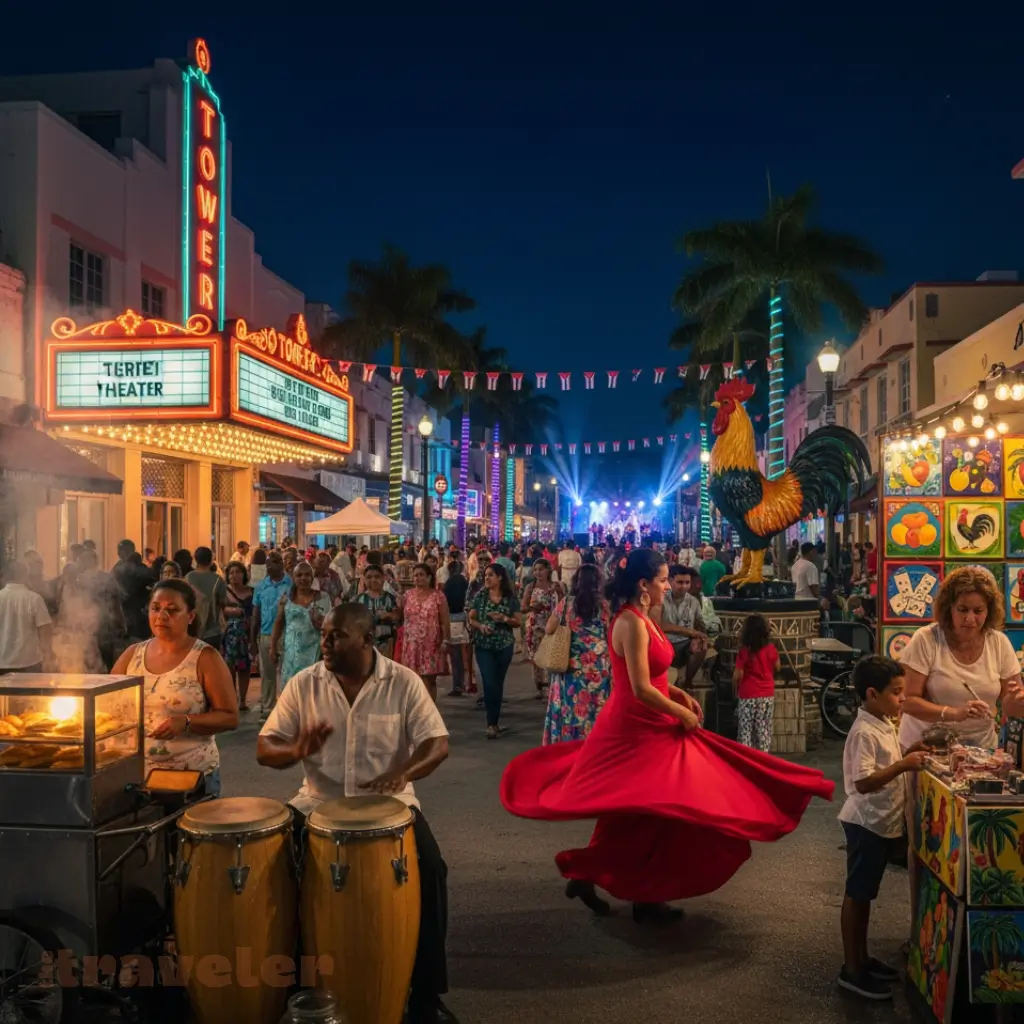
On the third Friday of every month, Little Havana truly comes alive during Viernes Culturales (Cultural Fridays). The neighborhood closes portions of Calle Ocho to cars and the street fills with art exhibits, live music, poetry readings and dancers. Free walking tours depart from the Tower Theater, guiding visitors through historic sites and hidden alleyways while vendors serve Cuban snacks.
The festival began in 2000 and continues as a family‑friendly event where locals share their heritage with visitors. I joined a crowd listening to a band playing son cubano and watched children swirl to the rhythm while elders sang along. For a moment I wasn’t a tourist; I was part of a neighborhood gathering celebrating its roots and its future.
Authenticity Beyond the Tourist Strip
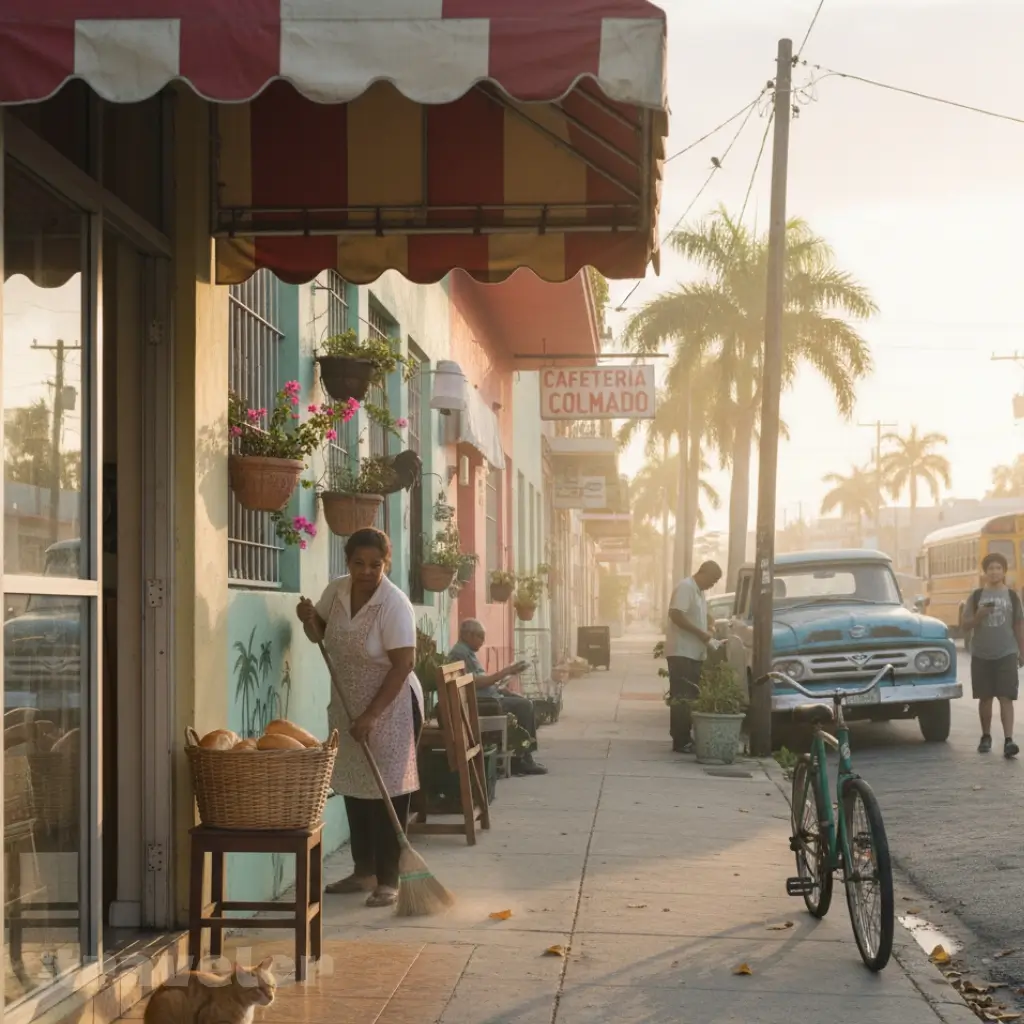
Miami Beach’s neon‑drenched strip offers art‑deco glamour and ocean breezes, yet the experience often feels curated for visitors. Little Havana, by contrast, wears its heart on its sleeve. The neighborhood remains an enclave built by Cuban exiles who established businesses and cultural institutions after the revolution of 1959; many residents still identify more as a community in exile than as assimilated Americans. Small family‑run bakeries, botánicas, cigar factories and salsa bars form the backbone of an economy rooted in tradition.
While parts of Calle Ocho can feel like they’re catering to tourists, there are authentic spaces – such as Domino Park – where elderly Cuban‑Americans continue to play cut‑throat domino games as tourists watch. Knowing that Little Havana has been recognized as a National Treasure to protect it from over‑development reinforced my sense that I was witnessing something precious.
Walking through Little Havana showed me a side of Miami rarely seen in glossy brochures. It’s a place where art blooms from sidewalk roosters, where domino tiles echo like heartbeat, where murals tell stories of exile and joy, and where cultural pride endures in the face of change.
Miami’s famous beaches may draw the crowds, but if you want to feel the city’s soul, follow the rooster’s gaze down Calle Ocho and let the sights, smells and sounds guide you.
FAQ
What makes Little Havana special?
It’s a living Cuban-American neighborhood where art, coffee, and conversation connect generations.
What is Calle Ocho known for?
Its cigar shops, murals, and colorful rooster statues that celebrate Miami’s Cuban heritage.
Can visitors play dominoes in Domino Park?
Only locals over 55 can play, but visitors are welcome to watch and often invited to join.
When does Viernes Culturales happen?
Every third Friday of the month: include music, food, and art take over the streets of Little Havana.
Is Little Havana safe for walking?
Yes, it’s generally safe during the day, especially around Calle Ocho’s main attractions.
